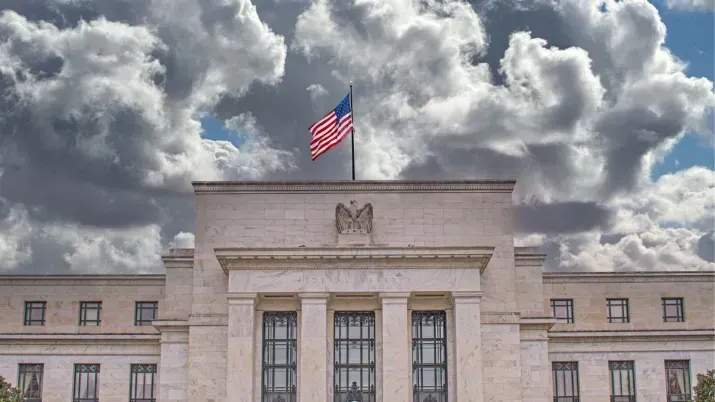Quantitative Investments

Quant 2.0 - The AI Revolution
AI is expanding what systematic investing can achieve — from unlocking deeper insights in complex data to building more adaptive, responsive portfolios. This piece explores the shift from classical quant to Quant 2.0 and what a more adaptive, data-driven future could look like.
TwentyFour

UK migration a reminder of unusual labour market dynamics
Late last month, the UK’s Office for National Statistics (ONS) published updated migration numbers for the year to June 2025. As we argued here, immigration will be an important variable to monitor when it comes to assessing the health of labour markets.
TwentyFour

UK banks earn lower capital requirements with stress test results
After solid stress test results from UK insurers last week, on Tuesday it was the banks’ turn as the Bank of England (BoE) published its 2025 stress test results along with December’s Financial Stability Report.
TwentyFour

Private credit and life insurers: Is there a problem?
The terms private credit and life insurance have appeared together in multiple negative headlines in recent weeks, and to casual observers the link between the two may not be immediately obvious.
Quality Growth Boutique

2026 global equity outlook: the promise and peril of an AI-driven market
While the promise of AI remains compelling, its market dominance and reliance on external financing create vulnerabilities. By seeking opportunities in areas of predictable growth and resilience – both within and outside the AI ecosystem – we believe investors can better navigate the uncertainties ahead.
Quantitative Investments

Global rates: a mirage of diversification
Government bonds are primarily driven by moves in their underlying interest rates – and these rates are highly correlated. In this QuantaByte, we show how correlated interest rates really are, and what conclusions an investor can draw to tackle this problem.
TwentyFour

Job done for Reeves but numbers far from certain
The wait is over. UK Chancellor Rachel Reeves delivered her much anticipated November Budget on Wednesday, ending weeks of rumours and leaks that had created a general feeling that all measures were on the table – now investors, businesses and taxpayers alike can fill in the empty cells on their spreadsheets and calculate what’s left.
TwentyFour

Insurance stress tests show resilience amid private credit concerns
The private credit exposure of life insurance firms, particularly those with private equity (PE) owners, has been drawing the market’s attention in recent weeks.
TwentyFour

AI: How deep are the bond market’s pockets?
For much of the past year, the AI story in markets has been one of unrestrained optimism. Firms have been racing to spend on chips, infrastructure, and data centres, and equity valuations have generally rewarded those with the boldest capital expenditure plans.
Fixed Income Boutique

The hidden potential of corporate bonds
Discover how developed and emerging market corporate bonds may offer stability, diversification, and alpha opportunities. With yields at multi-year highs and improving fundamentals, our experts believe now is the time to unlock the hidden potential of corporate bonds in your portfolio.
Asset management

Webinar replay | Under Pressure: Checks and balances in central banks
You can now watch the replay of our webinar “Under Pressure: Checks and balances in central banks”
TwentyFour

Flash Fixed Income: Are there more “cockroaches” in credit?
October brought the first serious bout of volatility in corporate bond markets for some time, with two high-profile US bankruptcies raising fears of a more systemic issue in credit.
Quantitative Investments

The signals beneath the surface
AI models don’t have to be black boxes. In the final article of our Expl(AI)ning series, discover how SHAP values reveal the contributions behind model predictions, enhancing transparency and trust in AI-powered investing. See how we use these insights within our AI Powered process.
TwentyFour

Weird week of data to drive macro narrative
Economic data this week will be weird, and for central bankers it might not be wonderful. In the US, not only will we endure the aberration of non-farm payrolls (NFP) data being published on a Thursday, but we’ll also get several late macro data releases with the government shutdown put off until at least January.
Quantitative Investments

When Many Own the Same Few
Rising concentration in the S&P 500 has made markets more sensitive to a handful of mega-cap stocks driving performance. While technology remains dominant, this imbalance raises questions around volatility, diversification, and market resilience. The Solutions team from the Quantitative Investments Boutique explores how concentration has evolved and what it means for investors navigating today’s equity landscape.
Quality Growth Boutique

Beyond the AI bubble: finding predictable growth in video game stocks
Leaders in the video game industry, such as Tencent Holdings, NetEase, and Capcom, offer a distinct blend of predictability and growth through a combination of "Evergreen" titles and new game pipelines. These firms have generated recurring revenues and compounded earnings at approximately 20% annually over the past decade.
TwentyFour

CLOs are finally pricing the tail
For some time now, collateralised loan obligations (CLOs) have in our view been one of the standout risk-adjusted opportunities in all of fixed income, and in recent years (including this one) their performance has lived up to that billing.
TwentyFour

Stakes are high but Fed in control as it ends QT
In 2017, when the Federal Reserve (Fed) was preparing to shrink its balance sheet, then-chair Janet Yellen famously described the process of quantitative tightening (QT) as being "like watching paint dry."
TwentyFour

Solvency II transition leaves insurers (and bondholders) in better place
This year will go down as an important period for the European insurance sector, which is concluding its effort to phase out capital instruments issued under the old Solvency I framework and replace them with more modern Solvency II structures.
Quantitative Investments

The top 2%
Can the top 2% make all the difference? The Quantitative Investments team tested an AI-powered stock picker across 20 years of data. By analysing hit rates alongside market concentration and dispersion, they uncovered fresh insights into portfolio management. Discover how AI reshapes investing in our latest article.
TwentyFour

Should bond markets fear an AI bubble?
There is an emerging sense of unease in the markets around the scale and productivity of corporate investments in AI. As fixed income investors, not equity or tech managers, we will not aim to assess the longevity or possible applications of these nascent technologies, and nor should we opine on when or by how much equity markets might go up or down.
Asset management

Under Pressure: Checks and balances in central banks
Political influence over monetary policy can undermine long-term economic stability, with a potential impact on investor confidence, bond markets, and the broader economy. This article explores scenarios ranging from zero influence to a mild erosion of US Federal Reserve independence to outright political capture.
TwentyFour

Fed tension limits scope for UST rally
Jerome Powell and his Federal Reserve (Fed) colleagues decided to cut the Fed Funds rate by 25bp to 3.75-4% at last week’s policy meeting, marking 150bp of cuts since the cycle began in September 2024.
TwentyFour

Beyond the noise, conditions favour fixed income
Amid tariffs, bankruptcies, and uncertainty, credit fundamentals remain strong. Elevated yields and solid corporate balance sheets favour income-focused fixed income strategies over government bonds, even as volatility persists.
